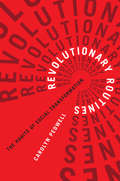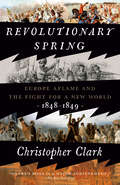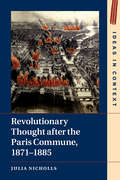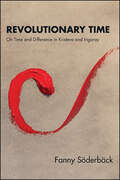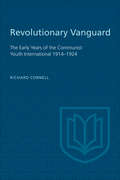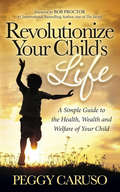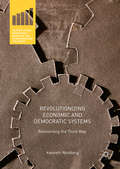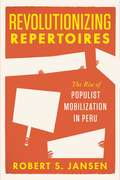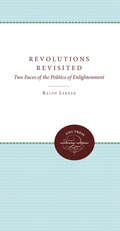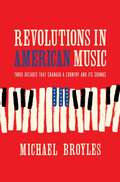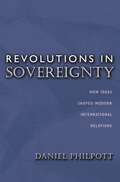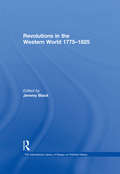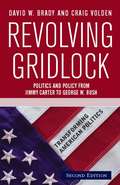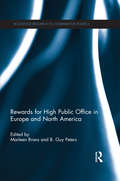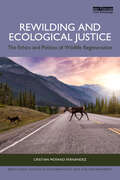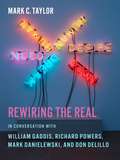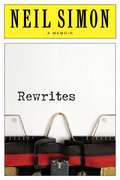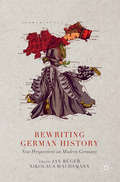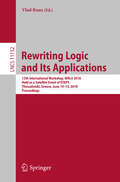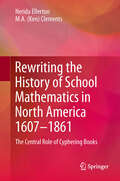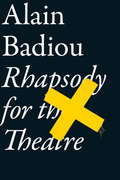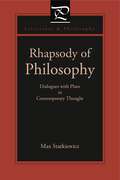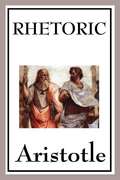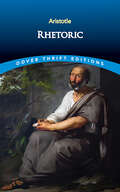- Table View
- List View
Revolutionary Routines: The Habits of Social Transformation (Outspoken)
by Carolyn PedwellAlthough we tend to associate social transformation with major events, historical turning points, or revolutionary upheaval, Revolutionary Routines argues that seemingly minor everyday habits are the key to meaningful change.Through its account of influential socio-political processes – such as the resurgence of fascism and white supremacy, the crafting of new technologies of governance, and the operation of digital media and algorithms – this book rethinks not only how change works, but also what counts as change. Drawing examples from the affective politics of Trumpism and Brexit, nudge theory and behaviour change, social media and the international refugee crisis, and the networked activism of Occupy and Black Lives Matter, Carolyn Pedwell argues that minor gestures may be as significant as major happenings, revealing the powerful potential in our ability to remake shared habits and imaginatively reinhabit everyday life.Revolutionary Routines offers a new understanding of the logics of habit and the nature of social change, power, and progressive politics, illustrating diverse forms of consciousness and co-operation through which political solidarities might take shape.
Revolutionary Spring: Europe Aflame and the Fight for a New World, 1848-1849
by Christopher ClarkFrom the bestselling author of The Sleepwalkers comes an epic history of the 1848 revolutions that swept Europe, and the charismatic figures who propelled them forward—&“a beautifully written, richly detailed account of a historical moment that rhymes and resonates, in many strange ways, with our own era of turmoil and disruption&” (Amitav Ghosh, author of Sea of Poppies).As history, the uprisings of 1848 have long been overshadowed by the French Revolution of 1789 and the Russian revolutions of the early twentieth century. And yet in 1848 nearly all of Europe was aflame with conflict. Parallel political tumults spread like brush fire across the entire continent, leading to significant changes that continue to shape our world today. These battles for the future were fought with one eye kept squarely on the past: The men and women of 1848 saw the urgent challenges of their world as shaped profoundly by the past, and saw themselves as inheritors of a revolutionary tradition.Celebrated Cambridge historian Christopher Clark describes 1848 as &“the particle collision chamber at the center of the European nineteenth century,&” a moment when political movements and ideas—from socialism and democratic radicalism to liberalism, nationalism, corporatism, and conservatism—were tested and transformed. The insurgents asked questions that sound modern to our ears: What happens when demands for political or economic liberty conflict with demands for social rights? How do we reconcile representative and direct forms of democracy? How is capitalism connected to social inequality? The revolutions of 1848 were short-lived, but their impact on public life and political thought throughout Europe and beyond has been profound.Meticulously researched, elegantly written, and filled with a cast of charismatic figures, including the social theorist Alexis de Tocqueville, the writer George Sand, and the troubled priest Félicité de Lamennais, who struggled to reconcile his faith with politics, Revolutionary Spring offers a new understanding of 1848 that suggests chilling parallels to our present moment. &“Looking back at the revolutions from the end of the first quarter of the twenty-first century, it is impossible not to be struck by the resonances,&” Clark writes. &“If a revolution is coming for us, it may look something like 1848.&”
Revolutionary Subjectivity in Post-Marxist Thought: Laclau, Negri, Badiou (Rethinking Political and International Theory)
by Oliver HarrisonSince the onset of the Global Financial Crisis the ideas of Karl Marx have once again become prominent in social and political thought. This book turns to Marx’s theory of revolutionary subjectivity as a means of assessing the work of three contemporary global theorists: Ernesto Laclau, Antonio Negri, and Alain Badiou, considered here together for the first time.
Revolutionary Thought after the Paris Commune, 1871–1885 (Ideas in Context #120)
by Julia NichollsThis first comprehensive account of French revolutionary thought in the years between the crushing of France's last nineteenth-century revolution and the re-emergence of socialism as a meaningful electoral force offers new interpretations of the French revolutionary tradition. Drawing together material from Europe, North America, and the South Pacific, Julia Nicholls pieces together the nature and content of French revolutionary thought in this often overlooked era. She shows that this was an important and creative period, in which activists drew upon fresh ideas they encountered in exile across the world to rebuild a revolutionary movement that was both united and politically viable in the changed circumstances of France's new Third Republic. The relative success of these efforts, moreover, has significant implications for the ways in which we understand the founding years of the Third Republic, the nature of the modern revolutionary tradition, and the origins of European Marxism.
Revolutionary Time: On Time and Difference in Kristeva and Irigaray
by Fanny SoderbackThis book is the first to examine the relationship between time and sexual difference in the work of Julia Kristeva and Luce Irigaray. Because of their association with reproduction, embodiment, and the survival of the species, women have been confined to the cyclical time of nature—a temporal model that is said to merely repeat itself. Men, on the other hand, have been seen as bearers of linear time and as capable of change and progress. Fanny Söderbäck argues that both these temporal models make change impossible because they either repeat or repress the past. The model of time developed here—revolutionary time—aims at returning to and revitalizing the past so as to make possible a dynamic-embodied present and a future pregnant with change. Söderbäck stages an unprecedented conversation between Kristeva and Irigaray on issues of both time and difference, and engages thinkers such as Simone de Beauvoir, Jacques Derrida, Sigmund Freud, Judith Butler, Hannah Arendt, and Plato along the way.
Revolutionary Vanguard: The Early Years of the Communist Youth International 1914-1924
by Richard CornellThe monolithic nature of the communist movement during the Stalinist period overlay pluralist tendencies. These were suppressed in the 1920s, though they were to re-emerge after Stalin's death.The history of the Communist Youth International is revealed in this volume as an important example of the 'autonomist' tendencies in the communist movement after the First World War. The experience of the CYI also demonstrates that differences between Leninist and Stalinist eras were of degree, rather than of kind. Under Lenin, organizational principles and practices were introduced that gave to the new communist movement a distinct, authoritarian cast.Cornell considers the relevance, in the development of radical movements among the young, of such qualities as untempered idealism, a predisposition to embrace the most radical alternatives for social change, and a self-assertiveness or rebelliousness directed against traditional adult teachings. He shows how these qualities were to lead, after the First World War (and more recently), to conflicts between radical, ideologically orthodox youth and more pragmatic adult party leaders. In introducing their new kind of radicalism, the young communists of Europe in 1919 considered themselves to be the most revolutionary element among revolutionaries – the highest form of 'revolutionary vanguard.' Moscow did not agree.
Revolutionize Your Child's Life: A Simple Guide to the Health, Wealth and Welfare of Your Child
by Peggy CarusoWorking with so many children, Peggy Caruso has discovered the underlying factor for the causes of depression, cutting, defiance and many other behavioral issues. In today’s society, the rapid growth of technology has created dangerous situations for our children. Peggy educates parents on understanding every stage of their child from birth to adulthood, identify the signs of negativity and then assist them with a plan of action to modify their behavior in a positive manner. She will provide them with principles, tools and techniques to assist at every level.
Revolutionizing Economic and Democratic Systems
by Kenneth NordbergThis book responds to an increasingly pluricentric, reflexive, and flexible society as a result of globalization and economic liberation from the bureaucratic-political system. The third industrial revolution saw citizens, companies, and the economy acting in functional networks rather than in static ones, making top-down governing ever more difficult. Despite this, society systems created in the wake of the second industrial revolution linger on and must adapt to the globalized, digitized reality in order to stay necessary and relevant. Through a theoretical discussion and four empirical cases studying governance and innovation systems, this volume is the first to describe the causes behind the impasse Western society seems to find itself in and suggests inclusive economic and democratic structures working in a bottom-up fashion as a way out. By understanding local circumstances as well as the innovative power of inclusive and participative structures, we can begin to pave the way to legitimate governance and growth. This book adds to the academic literature on democracy, governance, economy, and innovation systems for researchers and scholars of political science, social science, and economics.
Revolutionizing Repertoires: The Rise of Populist Mobilization in Peru
by Robert S. JansenPoliticians and political parties are for the most part limited by habit—they recycle tried-and-true strategies, draw on models from the past, and mimic others in the present. But in rare moments politicians break with routine and try something new. Drawing on pragmatist theories of social action, Revolutionizing Repertoires sets out to examine what happens when the repertoire of practices available to political actors is dramatically reconfigured. Taking as his case study the development of a distinctively Latin American style of populist mobilization, Robert S. Jansen analyzes the Peruvian presidential election of 1931. He finds that, ultimately, populist mobilization emerged in the country at this time because newly empowered outsiders recognized the limitations of routine political practice and understood how to modify, transpose, invent, and recombine practices in a whole new way. Suggesting striking parallels to the recent populist turn in global politics, Revolutionizing Repertoires offers new insights not only to historians of Peru but also to scholars of historical sociology and comparative politics, and to anyone interested in the social and political origins of populism.
Revolutions Revisited: Two Faces of the Politics of Enlightenment
by Ralph LernerIn this elegant extended essay, Ralph Lerner concentrates on the politics of enlightenment--the process by which those who sought to set minds free went about their work. Eighteenth-century revolutionaries in America and Europe, Lerner argues, found that a revolution aimed at liberating bodies and minds had somehow to be explained and defended. Lerner first investigates how the makers of revolution sought to improve their public's aspirations and chances. He pays particular attention to Benjamin Franklin, to the tone and substance of revolutionaries' appeals on both sides of the Atlantic, and to the preoccupations of first- and second-generation enlighteners among the Americans. He then unfolds the art by which later political actors, confronting the profound political, constitutional, and social divisions of their own day, drew upon and reworked their national revolutionary heritage. Lerner's examination of the speeches and writings of Edmund Burke, Abraham Lincoln, and Alexis de Tocqueville shows them to be masters of a political rhetoric once closely analyzed by Plato and his medieval student al-Farabi but now nearly forgotten.Originally published in 1994.A UNC Press Enduring Edition -- UNC Press Enduring Editions use the latest in digital technology to make available again books from our distinguished backlist that were previously out of print. These editions are published unaltered from the original, and are presented in affordable paperback formats, bringing readers both historical and cultural value.
Revolutions in American Music: Three Decades That Changed a Country and Its Sounds
by Michael BroylesThe story of how unexpected connections between music, technology, and race across three tumultuous decades changed American culture. How did a European social dance craze become part of an American presidential election? Why did the recording industry become racially divided? Where did rock ’n’ roll really come from? And how do all these things continue to reverberate in today’s world? In Revolutions in American Music, award-winning author Michael Broyles shows the surprising ways in which three key decades—the 1840s, the 1920s, and the 1950s—shaped America’s musical future. Drawing connections between new styles of music like the minstrel show, jazz, and rock ’n’ roll, and emerging technologies like the locomotive, the first music recordings, and the transistor radio, Broyles argues that these decades fundamentally remade our cultural landscape in enduring ways. At the same time, these connections revealed racial fault lines running through the business of music, in an echo of American society as a whole. Through the music of each decade, we come to see anew the social, cultural, and political fabric of the time. Broyles combines broad historical perspective with an eye for the telling detail and presents a variety of characters to serve as focal points, including the original Jim Crow, a colorful Hungarian dancing master named Gabriel de Korponay, “Empress of the Blues” Bessie Smith, and the singer Johnnie Ray, whom Tony Bennett called “the father of rock ’n’ roll.” Their stories, and many others, animate Broyles’s masterly account of how American music became what it is today.
Revolutions in Sovereignty: How Ideas Shaped Modern International Relations (Princeton Studies in International History and Politics #92)
by Daniel PhilpottHow did the world come to be organized into sovereign states? Daniel Philpott argues that two historical revolutions in ideas are responsible. First, the Protestant Reformation ended medieval Christendom and brought a system of sovereign states in Europe, culminating at the Peace of Westphalia in 1648. Second, ideas of equality and colonial nationalism brought a sweeping end to colonial empires around 1960, spreading the sovereign states system to the rest of the globe. In both cases, revolutions in ideas about legitimate political authority profoundly altered the "constitution" that establishes basic authority in the international system. Ideas exercised influence first by shaping popular identities, then by exercising social power upon the elites who could bring about new international constitutions. Swaths of early modern Europeans, for instance, arrived at Protestant beliefs, then fought against the temporal powers of the Church on behalf of the sovereignty of secular princes, who could overthrow the formidable remains of a unified medieval Christendom. In the second revolution, colonial nationalists, domestic opponents of empire, and rival superpowers pressured European cabinets to relinquish their colonies in the name of equality and nationalism, resulting in a global system of sovereign states. Bringing new theoretical and historical depth to the study of international relations, Philpott demonstrates that while shifts in military, economic, and other forms of material power cannot be overlooked, only ideas can explain how the world came to be organized into a system of sovereign states.
Revolutions in the Western World 1775–1825 (The International Library of Essays on Political History)
by Jeremy BlackConsidering what has been described as an Age of Revolutions, Black assesses a formative period in world history by examining the North American, European, Haitian and Latin American Revolutions. Causes, courses and consequences are all clarified in the articles selected and an introduction charts the major themes.
Revolving Gridlock
by David W. Brady Craig VoldenDespite the early prospects for bipartisan unity on terrorism initiatives, government gridlock continues on most major issues in the wake of the 2004 elections. In this fully revised edition, political scientists David W. Brady and Craig Volden demonstrate that gridlock is not a product of divided government, party politics, or any of the usual scapegoats. It is, instead, an instrumental part of American government--built into our institutions and sustained by leaders acting rationally not only to achieve set goals but to thwart foolish inadvertencies. Looking at key legislative issues from the divided government under Reagan, through Clinton's Democratic government to complete unified Republican control under George W. Bush, the authors clearly and carefully analyze important crux points in lawmaking: the swing votes, the veto, the filibuster, and the rise of tough budget politics. They show that when it comes to government gridlock, it doesn't matter who's in the White House or who's in control of Congress; it's as American as apple pie, and its results may ultimately be as sweet in ensuring stability and democracy.
Rewards for High Public Office in Europe and North America (Routledge Research in Comparative Politics)
by B. Guy Peters Marleen BransAnyone observing the recent scandals in the United Kingdom could not fail to understand the political importance of the rewards of high public office. The British experience has been extreme but by no means unique, and many countries have experienced political over the pay and perquisites of public officials. This book addresses an important element of public governance, and does so in longitudinal and comparative manner. The approach enables the contributors to make a number of key statements not only about the development of political systems but also about the differences among those systems. It provides a unique and systematic investigation of both formal and informal rewards for working in high-level positions in the public sector, and seeks to determine the impacts of the choices of reward structures. Covering 14 countries and drawing on a wide range of data sources, this work will be of great interest to students and scholars of comparative public administration, international politics and government.
Rewilding and Ecological Justice: The Ethics and Politics of Wildlife Regeneration (Routledge Studies in Conservation and the Environment)
by Cristian Moyano-FernándezThis book presents rewilding as a matter of ecological justice. To date, most books and articles on rewilding have viewed this concept through the lens of environmental science, while others have analyzed it from a political, ethical, and philosophical perspective. However, little attention has so far been paid to the justice angle of rewilding. Why and how should justice for rewilding be articulated? In order to address this question, Rewilding and Ecological Justice delves into the capabilities approach extended to nonhumans, distributive theories of ecological justice, welfare biology strategies applied to wildlife, environmental virtues, philosophies of recognition and identity, and decolonial studies. By discussing these narratives, this book is able to outline a roadmap indicating the key factors which should be considered in a justice approach to wildlife regeneration. Given the current and worsening socioecological crisis, rewilding initiatives are likely to increase, so this book explores how to ensure that their development is just for all, inclusive of both humans and nonhumans, drawing on examples from across the globe.This book will be of great interest to students and scholars of rewilding, ecological ethics and justice, environmental philosophy, biodiversity conservation, and ecological restoration.
Rewiring the Real: In Conversation with William Gaddis, Richard Powers, Mark Danielewski, and Don DeLillo (Religion, Culture, and Public Life #12)
by Mark C. TaylorDigital and electronic technologies that act as extensions of our bodies and minds are changing how we live, think, act, and write. Some welcome these developments as bringing humans closer to unified consciousness and eternal life. Others worry that invasive globalized technologies threaten to destroy the self and the world. Whether feared or desired, these innovations provoke emotions that have long fueled the religious imagination, suggesting the presence of a latent spirituality in an era mistakenly deemed secular and posthuman.William Gaddis, Richard Powers, Mark Danielewski, and Don DeLillo are American authors who explore this phenomenon thoroughly in their work. Engaging the works of each in conversation, Mark C. Taylor discusses their sophisticated representations of new media, communications, information, and virtual technologies and their transformative effects on the self and society. He focuses on Gaddis's The Recognitions, Powers's Plowing the Dark, Danielewski's House of Leaves, and DeLillo's Underworld, following the interplay of technology and religion in their narratives and their imagining of the transition from human to posthuman states. Their challenging ideas and inventive styles reveal the fascinating ways religious interests affect emerging technologies and how, in turn, these technologies guide spiritual aspirations. To read these novels from this perspective is to see them and the world anew.
Rewrites: A Memoir
by Neil SimonBarefoot in the Park, The Odd Couple, Plaza Suite, The Goodbye Girl, The Out-of-Towners, The Sunshine Boys -- Neil Simon's plays and movies have kept many millions of people laughing for almost four decades. Today he is recognized not only as the most successful American playwright of all time, but also as one of the greatest. More than the humor, however, it is the humanity of Neil Simon's vision that has made him America's most beloved playwright and earned him such enduring success. Now, in Rewrites, he has written a funny, deeply touching memoir, filled with details and anecdotes of the writing life and rich with the personal experiences that underlie his work. Since Come Blow Your Horn first opened on Broadway in 1960, few seasons have passed without the appearance of another of his laughter-filled plays, and indeed on numerous occasions two or more of his works have been running simultaneously. But his success was something Neil Simon never took for granted, nor was the talent to create laughter something that he ever treated carelessly: it took too long for him to achieve the kind of acceptance -- both popular and critical -- that he craved, and the path he followed frequently was pitted with hard decisions. All of Neil Simon's plays are to some extent a reflection of his life, sometimes autobiographical, other times based on the experiences of those close to him. What the reader of this warm, nostalgic memoir discovers, however, is that the plays, although grounded in Neil Simon's own experience, provide only a glimpse into the mind and soul of this very private man. In Rewrites, he tells of the painful discord he endured at home as a child, of his struggles to develop his talent as a writer, and of his insecurities when dealing with what proved to be his first great success -- falling in love. Supporting players in the anecdote-filled memoir include Sid Caesar, Jerry Lewis, Walter Matthau, Robert Redford, Gwen Verdon, Bob Fosse, Maureen Stapleton, George C. Scott, Peter Sellers, and Mike Nichols. But always at center stage is his first love, his wife Joan, whose death in the early seventies devastated him, and whose love and inspiration illuminate this remarkable and revealing self-portrait. Rewrites is rich in laughter and emotion, and filled with the memories of a sometimes sweet, sometimes bittersweet life.
Rewriting German History: New Perspectives on Modern Germany
by Nikolaus Wachsmann Jan RügerRewriting German History offers striking new insights into key debates about the recent German past. Bringing together cutting-edge research and current discussions, this volume examines developments in the writing of the German past since the Second World War and suggests new directions for scholarship in the twenty-first century.
Rewriting Logic and Its Applications: 12th International Workshop, Wrla 2018, Held As A Satellite Event Of Etaps, Thessaloniki, Greece, June 14-15, 2018, Proceedings (Lecture Notes in Computer Science #11152)
by Vlad RusuThis book constitutes revised selected papers from the 12th International Workshop on Rewriting Logic and Its Applications, WRLA 2018, held in Thessaloniki, Greece, in June 2018. The 12 full papers presented in this volume were carefully reviewed and selected from 21 submissions. They deal with rewriting, a natural model of computation and an expressive semantic framework for concurrency, parallelism, communication, and interaction, and its applications.
Rewriting the History of School Mathematics in North America 1607-1861
by M. A. Ken Clements Nerida EllertonThe focus of this book is the fundamental influence of the cyphering tradition on mathematics education in North American colleges, schools, and apprenticeship training classes between 1607 and 1861. It is the first book on the history of North American mathematics education to be written from that perspective. The principal data source is a set of 207 handwritten cyphering books that have never previously been subjected to careful historical analysis.
Rhapsody For The Theatre
by Bruno Bosteels Alain BadiouFor Alain Badiou, theatre--unlike cinema--is the place for the staging of a truly emancipatory collective subject. In this sense theatre is, of all the arts, the one strictly homologous to politics: both theatre and politics depend on a limited set of texts or statements, collectively enacted by a group of actors or militants, which put a limit on the excessive power of the state. This explains why the history of theatre has always been inseparable from a history of state repression and censorship.This definitive collection includes not only Badiou's pamphlet Rhapsody for the Theatre but also essays on Jean-Paul Sartre, on the political destiny of contemporary theatre, and on Badiou's own work as a playwright, as author of the Ahmed Tetralogy.
Rhapsody of Philosophy: Dialogues with Plato in Contemporary Thought (Literature and Philosophy)
by Max StatkiewiczThis book proposes to rethink the relationship between philosophy and literature through an engagement with Plato’s dialogues. The dialogues have been seen as the source of a long tradition that subordinates poetry to philosophy, but they may also be approached as a medium for understanding how to overcome this opposition. Paradoxically, Plato then becomes an ally in the attempt “to overturn Platonism,” which Gilles Deleuze famously defined as the task of modern philosophy. Max Statkiewicz identifies a “rhapsodic mode” initiated by Plato in the dialogues and pursued by many of his modern European commentators, including Nietzsche, Heidegger, Irigaray, Derrida, and Nancy. The book articulates this rhapsodic mode as a way of entering into true dialogue (dia-logos), which splits any univocal meaning and opens up a serious play of signification both within and between texts. This mode, he asserts, employs a reading of Plato that is distinguished from interpretations emphasizing the dialogues as a form of dogmatic treatise, as well as from the dramatic interpretations that have been explored in recent Plato scholarship—both of which take for granted the modern notion of the subject. Statkiewicz emphasizes the importance of the dialogic nature of the rhapsodic mode in the play of philosophy and poetry, of Platonic and modern thought—and, indeed, of seriousness and play. This highly original study of Plato explores the inherent possibilities of Platonic thought to rebound upon itself and engender further dialogues.
Rhetoric
by AristotleRhetoric is the counterpart of Dialectic. Both alike are concerned with such things that come, more or less, within the general ken of all men and belong to no definite science. Accordingly all men make use, more or less, of both; for, to a certain extent, all men attempt to discuss statements and to maintain them, to defend themselves, and to attack others. Ordinary people do this either at random or through practice and from acquired habit. Both ways being possible, the subject can plainly be handled systematically, for it is possible to inquire the reason why some speakers succeed through practice and others spontaneously; everyone will at once agree that such an inquiry is the function of an art.
Rhetoric (Dover Thrift Editions: Philosophy)
by AristotleOne of the seminal works of Western philosophy, Aristotle's Rhetoric vastly influenced all subsequent thought on the subject — philosophical, political, and literary. Focusing on the use of language as both a vehicle and a tool to shape persuasive argument, Aristotle delineates with remarkable insight both practical and aesthetic elements and their proper combination in an effective presentation, oral or written. He also emphasizes the role of language in achieving precision and clarity of thought.The ancients regarded rhetoric as the crowning intellectual discipline — the synthesis of logical principles and other knowledge attained from years of schooling. Modern readers will find considerable relevance in Aristotelian rhetoric and its focus on developing persuasive tools of argumentation. Aristotle's examinations of how to compose and interpret speeches offer significant insights into the language and style of contemporary communications, from advertisements to news reports and other media.
